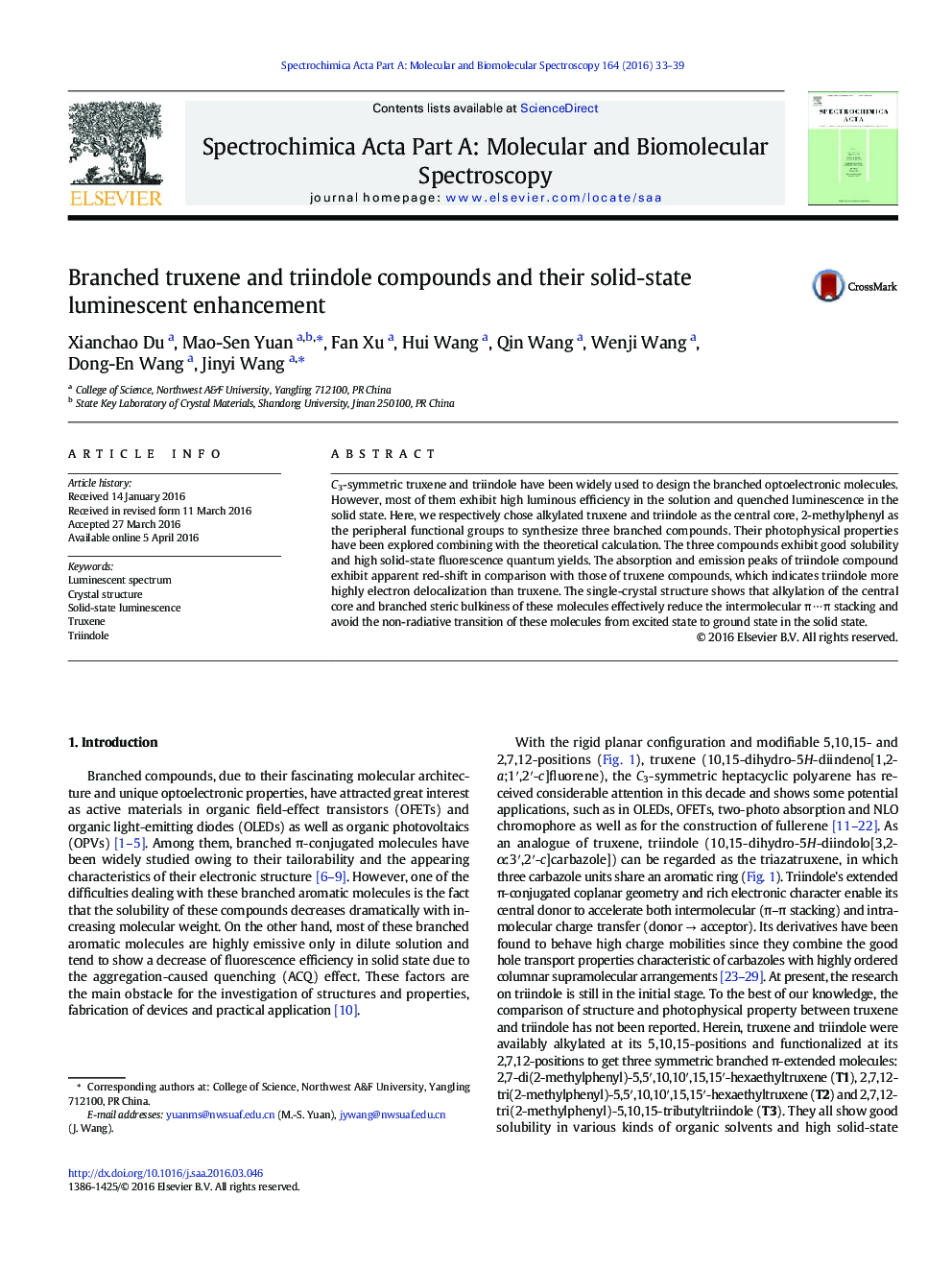| Article ID | Journal | Published Year | Pages | File Type |
|---|---|---|---|---|
| 1230908 | Spectrochimica Acta Part A: Molecular and Biomolecular Spectroscopy | 2016 | 7 Pages |
•Three symmetric branched truxene and triindole conjugated molecules were synthesized.•Their photophysical properties have been deeply explored.•They exhibit good solubility and high solid state luminous efficiency.•The central alkylation and branched bulkiness effectively reduce the π ⋯ π stacking.•Triindole exhibits greater electron delocalization than truxene.
C3-symmetric truxene and triindole have been widely used to design the branched optoelectronic molecules. However, most of them exhibit high luminous efficiency in the solution and quenched luminescence in the solid state. Here, we respectively chose alkylated truxene and triindole as the central core, 2-methylphenyl as the peripheral functional groups to synthesize three branched compounds. Their photophysical properties have been explored combining with the theoretical calculation. The three compounds exhibit good solubility and high solid-state fluorescence quantum yields. The absorption and emission peaks of triindole compound exhibit apparent red-shift in comparison with those of truxene compounds, which indicates triindole more highly electron delocalization than truxene. The single-crystal structure shows that alkylation of the central core and branched steric bulkiness of these molecules effectively reduce the intermolecular π ⋯ π stacking and avoid the non-radiative transition of these molecules from excited state to ground state in the solid state.
Graphical abstractFigure optionsDownload full-size imageDownload as PowerPoint slide
